The British graffiti artist Banksy makes this claim, as he has been spraying graffiti on walls in the West Bank and Gaza since 2005. In 2007, he founded Santa’s Ghetto and brought numerous international artists to Bethlehem, the city known as the birthplace of Jesus Christ. Ever since, the Separation Wall near the checkpoint that leads to Jerusalem has become a hotspot for the graffiti scene. This “Graffiti Mile” is now the second most visited tourist attraction. This wall, as it represents violence and occupation, has become a work of art.
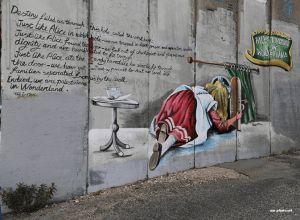
Graffiti art in Bethlehem is both politically and culturally important: many works of art are inspired by Palestinian culture and history and, despite their short-lived nature, contribute to preserving the city’s cultural heritage.

Starting in 2005, international artists such as Lushsux, Jorit Agoch, Blu, Sam3, Ron English, Swoon, Faile, Schoon-Tanis, Eric Calcaine, and How&Nosm have sprayed the infamous wall with their works of art, some of which have survived to this day. Moreover, the wall offers local artists such as Taqi Spateen and Cakes Stencils the opportunity to present their art to an international audience. These artists reflect the brutality of the occupation in their art: Cakes Stencils uses the stencil technique and, above all, depicts the situation and reality of life of Palestinian children. Barbed wire recurs as a constant motif in the pictures. An example is the graffiti “I was born at Qalandia checkpoint.” It highlights the experience of Palestinian mothers, some of whom were forced to give birth to their children at the checkpoint near Ramallah when they could not reach the maternity clinic in time due to arbitrary restrictions and excessive controls.
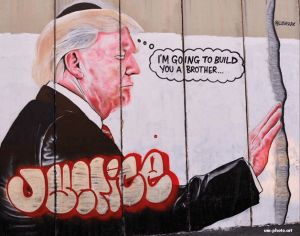
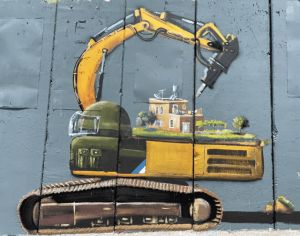
Taqi Spateen compares the Palestinians to Alice in Wonderland, both of whom lost their greatness (figuratively: dignity) in order to achieve freedom. Images of various Palestinian personalities – such as the nurse Razan al-Najjar, who was murdered by Israeli snipers while tending to the wounded at the Great March of Return protests in Gaza, and the journalist Shireen Abu Akleh, who was murdered while on duty in Jenin – are artistically depicted on the Separation Wall.
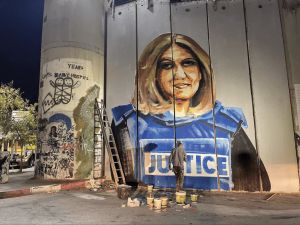
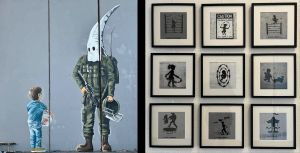
Today, the wall has become a work of art: tourists from all over the world come to the Graffiti Mile and can find out about the graffiti’s background. These images reveal glimpses into everyday life and show the brutal reality of the occupied country. It caused quite a stir when Banksy’s artwork Love in a Bin was shredded immediately after its auction at London’s Sotheby’s auction house, and the incident was reported in media worldwide. Banksy was certainly the door opener for Bethlehem’s graffiti art that is now reaching the outside world. Exhibitions about Banksy can be visited in many major cities. Taqi Spateen also exhibits his art in Europe.
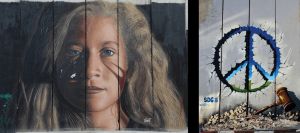

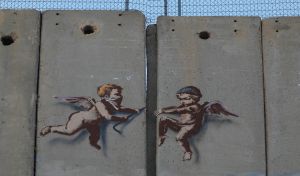
In his graffiti titled The Boy with the Goldfish Bowl, Taqi Spateen shows a child with what is left after the destruction of his childhood home: the bowl with the goldfish. Images like these aim to highlight and confront viewers with the injustice that occurs on an ongoing basis.
For more information, please visit Mindermann Photography, Bethlehem, available at http://www.um-photo.art/palestine/bethlehem/, and “Shop Behind the Wall,” available at https://shopbehindthewall.com/.
Article photos are courtesy of the author.
The German photographer Ursula Mindermann, together with a Palestinian from Bethlehem, runs a shop close to the Graffiti Mile. In her exhibition Graffiti Art in Bethlehem, Ursula has shown the works of international and local artists at various locations in Germany. The presented artworks have opened the eyes of visitors who are interested in art and politics.
Twenty-two years later, the potential This Week in Palestine still looks bright. In fact, neither the magazine, not its team have been ever stronger. We have been accused of; sometimes ridiculed for being the eternal optimists of Palestine. I hope the following brief about the company would show that our optimism was in place all along!
Briefly, Turbo Computers & Software Co. Ltd. ̶ publisher of This Week in Palestine ̶ started in September 1985 as a software house. In 1986 we developed a full-fledged multi-lingual word processor/typesetter around the (then) new laser printers. We were not satisfied with what was available on the market as far as word processors, so we simply built one of our own. It took us almost a whole year to produce a decent word processor for which we also built a set of fonts in Arabic; dot by dot. The package was a brilliant and an affordable solution for those who needed to typeset text in Arabic. Printers were particularly pleased with the product after realizing that they could use it to typeset books. Seeing its business potential, we started to use TurboSet, as we called the product, ourselves and began to offer layout services, which in turn introduced us to the design world.
In the early 1990s we shifted almost totally to being a design firm. Our technical background, coupled with being blessed with talented designers, prompted us to cater to the higher end of the market with designs and creativity that conform to international standards. For over than two decades now, we’ve been commonly known as Turbo Design.
In December 1998, Turbo Design put out the first issue of an English-language magazine called This Week in Palestine (TWiP). Twenty-two years later, the magazine is considered to be a major Palestinian success story and, unfortunately, remains the only English-language magazine of its kind in Palestine. TWiP essentially promotes and documents Palestine. In 2006, TWiP became a high-end brand under which annual agendas, calendars, and posters are marketed.
More than two and a half decades after we started to offer design services, we are still considered to be one of Palestine’s main design firms with a track record of producing some of Palestine’s highest-profile publications.
Donate to This Week in Palestine. Subscribe to This Week in Palestine.

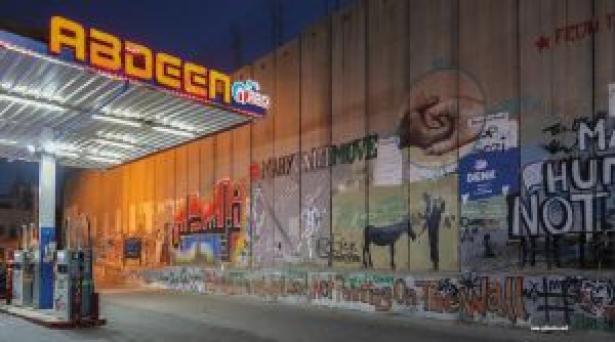
Spread the word